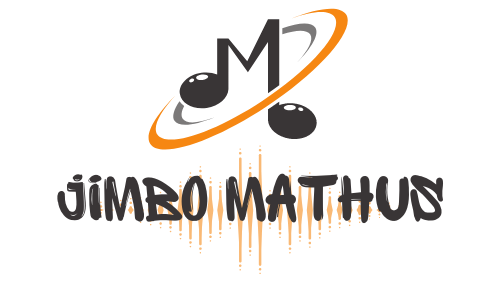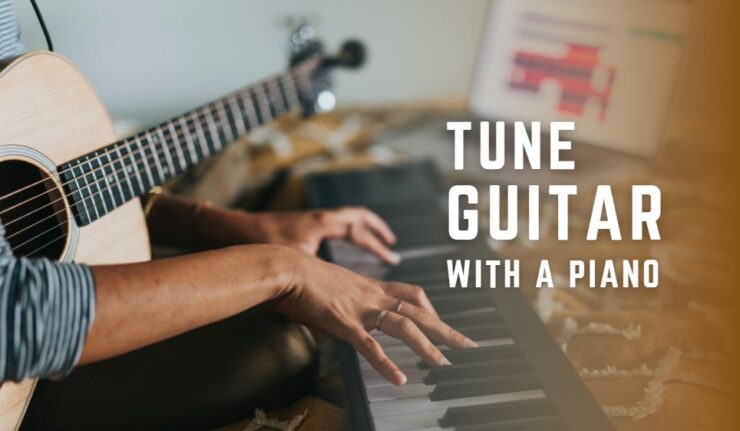Tuning your guitar can be a daunting task, especially if you are a beginner. However, it is an essential skill that every guitar player must master to produce great-sounding music. While there are many ways to tune a guitar, one of the easiest and most accurate methods is using a piano. In this article, we will teach you how to tune a guitar with a piano in a step-by-step guide.
Understanding Guitar Tuning Basics
Before we dive into the specifics of how to tune a guitar with a piano, it’s essential to understand the basics of guitar tuning. A guitar typically has six strings, which are tuned to specific pitches.
From the thickest string to the thinnest, the standard tuning for a guitar is E, A, D, G, B, E. Each string is named after the note it produces when played open. The thicker strings produce lower pitches, while the thinner ones produce higher pitches.
Why Tune a Guitar with a Piano?
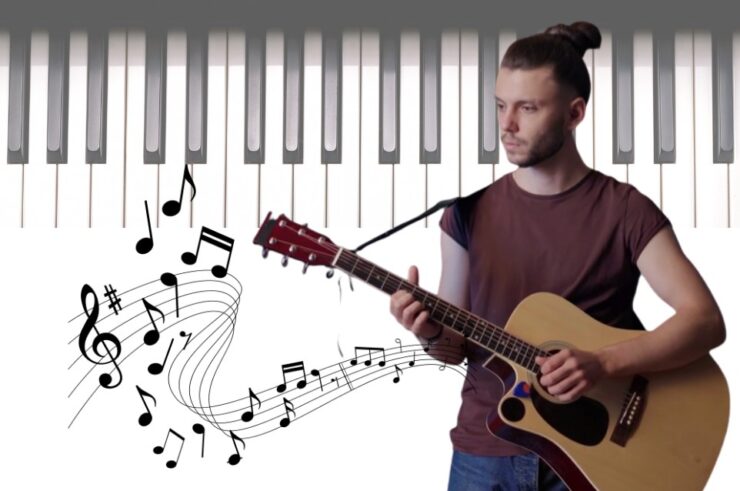
Tuning a guitar with a piano is one of the most effective methods to ensure that your guitar is ideally in tune. Here are some reasons why you should opt for this tuning method:
1. The Piano is a Fixed-Pitch Instrument
One of the main advantages of using a piano to tune your guitar is that it is a fixed-pitch instrument. This means that each key on this instrument produces a specific pitch that is consistent across all pianos. By using it as a reference, you can ensure that your guitar is in tune with a consistent pitch.
2. It Has a Wide Range of Notes
Another advantage of using a piano to tune your guitar is that it has a wide range of notes. This means that you can use it to tune each string on your guitar, from the low E string to the high E string. Using this instrument as a reference ensures that your guitar is in tune across its entire range.
3. It Provides a Reference Pitch
The piano provides a reference pitch that you can use to tune your guitar. This is typically the A above middle C, which vibrates at 440 Hz. By using this reference pitch, you can ensure that each string on your guitar is in tune with a consistent pitch.
Getting Started: What You Need
Before we can start the tuning process, there are a few things you’ll need:
- A guitar: You obviously can’t tune your guitar if you don’t have one!
- A piano: This is what we’ll be using to tune your guitar.
- A tuner app: While not strictly necessary, a tuner app can be helpful in verifying that you’ve tuned your guitar correctly.
Understanding Standard Tuning
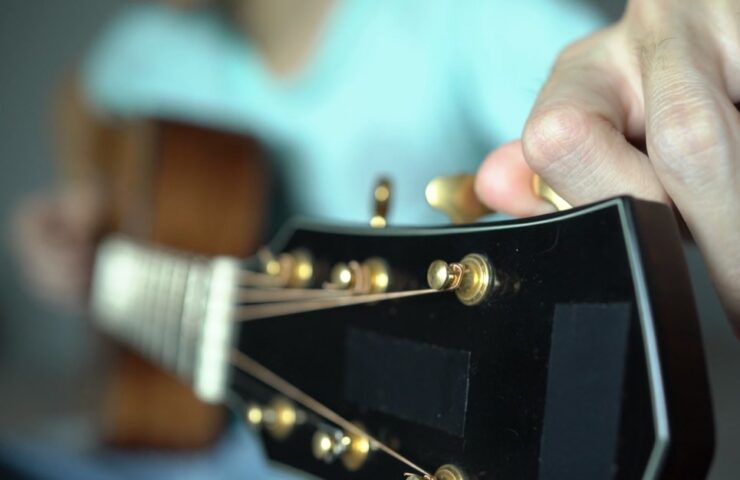
Before we start, we need to understand standard tuning. Standard tuning is when the strings of a guitar are tuned to the notes E, A, D, G, B, and E, from the lowest to the highest string.
The easiest way to remember this is to use a mnemonic, such as “Eddie Ate Dynamite, Good Bye Eddie.” The low E string is tuned to E2 (82.4 Hz), the A string to A2 (110 Hz), the D string to D3 (146.8 Hz), the G string to G3 (196 Hz), the B string to B3 (246.9 Hz), and the high E string to E4 (329.6 Hz).
Tuning Your Guitar with a Piano
Now that we know what we need and understand standard tuning, it’s time to tune your guitar with a piano. Here’s how:
- Tune the low E string: Play the E2 note on the piano and pluck the low E string.
- Tune the A string: Play the A2 note on the piano and pluck the A string.
- Tune the D string: Play the D3 note on the piano and pluck the D string.
- Tune the G string: Play the G3 note on the piano and pluck the G string.
- Tune the B string: Play the B3 note on the piano and pluck the B string.
- Tune the high E string: Play the E4 note on the piano and pluck the high E string.
Practical Tips for Tuning Your Guitar with a Piano
Tuning a guitar with a piano is a great way to ensure that your guitar is perfectly in tune. However, it’s important to know that this process can be tricky and requires some practice to get it right. Here are some practical tips to help you tune your guitar with a piano.
Tune the A String First
The first step in tuning your guitar with a piano is to tune the A string. You can use either the A below or above the middle C on the piano as a reference. Once you have the A string in tune, you can use it as a reference to tune the rest of your guitar.
Use a Tuner
While tuning your guitar with a piano is a great way to ensure that your guitar is in tune, it’s important to use a tuner to fine-tune each string. A tuner will help you ensure that each string is perfectly in tune and will help you avoid any errors that may occur when tuning by ear.
Check Your Intonation
After you’ve tuned your guitar, it’s important to check your intonation. This involves checking that each fret on your guitar produces the correct pitch. To check your intonation, play the 12th fret on each string and compare it to the open string. If the pitch is off, you may need to adjust the saddle on your guitar.
Practice Regularly
Tuning your guitar can be a challenging process, and it requires practice to get it right. Practice regularly to improve your skills and to ensure that you are is always in tune.
Frequently Asked Questions
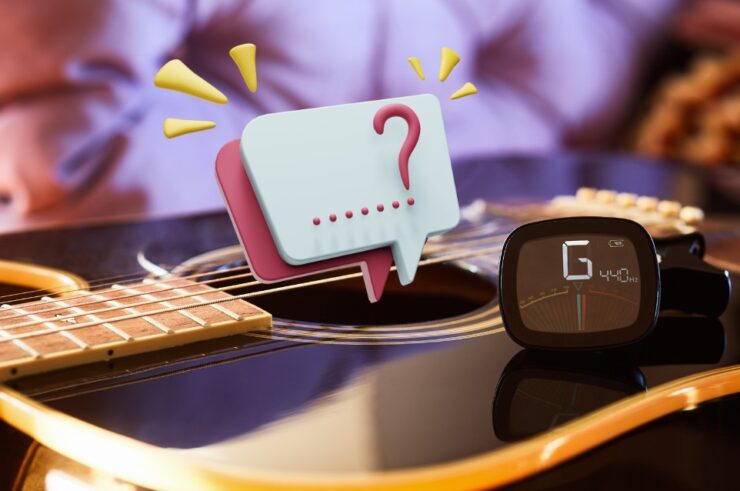
1. Is it necessary to tune a guitar with a piano?
No, it’s not necessary, but it is an effective method to ensure that your guitar is perfectly in tune.
2. What note should I tune my guitar to?
Typically, the A above middle C, which vibrates at 440 Hz, is used as a reference pitch when tuning a guitar with a piano.
3. Can I tune my guitar with a digital piano or keyboard?
Yes, you can tune your guitar with a digital piano or keyboard, as long as it produces a consistent pitch and is in tune.
4. How often should I tune my guitar?
It’s recommended to tune it every time you play it or at least once a day if you play it frequently.
5. What are some common tuning problems that can occur with this tuning method?
Some common tuning problems that can occur when tuning a guitar with a piano include the piano being out of tune, the guitar having intonation problems, and the guitar not being strung properly.
6. Can I use a guitar tuner instead of a piano to tune my guitar?
Yes, you can use a guitar tuner to tune it, but tuning with a piano provides a more accurate and consistent pitch reference.
Final Words
In conclusion, tuning your guitar with a piano is an effective method to ensure that your instrument is perfectly in tune. By following the practical tips and steps outlined in this article, you can easily tune your guitar using a piano, even if you’re a beginner.
Tuning with a piano provides a pitch reference that is consistently reliable and can help you achieve a more harmonious sound. So grab your guitar and piano, and start tuning!
We update our content regularly, so revisit our website if you want to stay in the loop about the music topics and modern ways to improve your playstyles.
